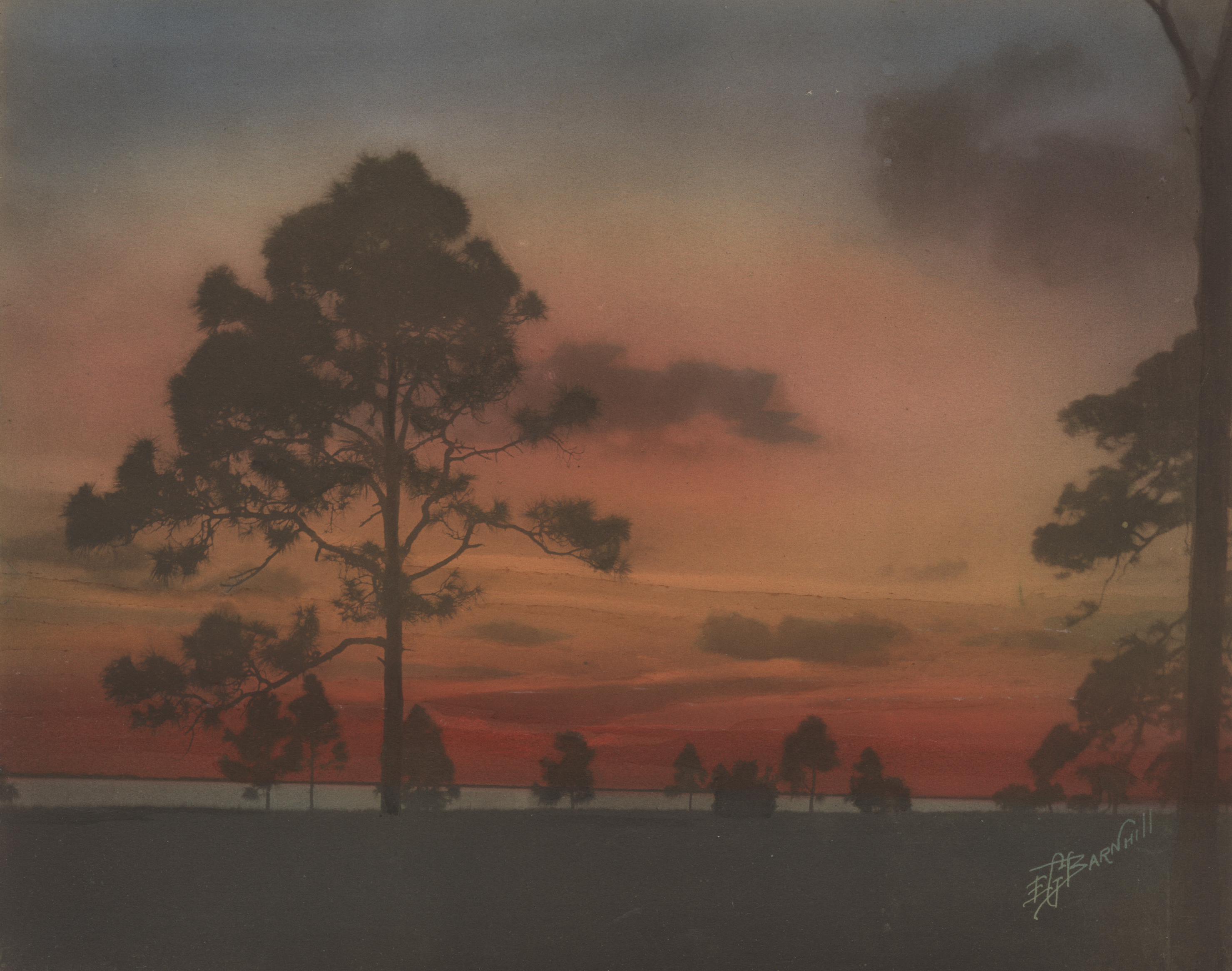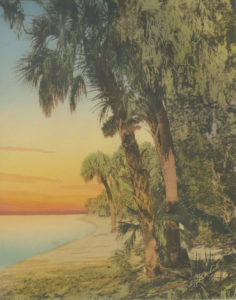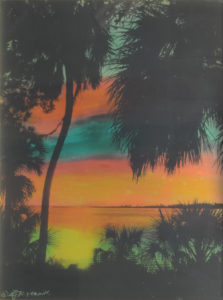Create
MFA debuts ghostly, glowing images of turn-of-the-century St. Pete

The name Esmond Grenard Barnhill doesn’t ring with the historical significance of William Straub, Tony Jannus, Paul Poynter or the others who served the city of St. Petersburg in the early 20th century. Indeed, more people have probably heard of Hubert Rutland – a long-ago banker and department store magnate – than E.G. Barnhill, who operated a photo-printing storefront downtown, and famously went on to exhibit Native American curios and other exotics elsewhere in the country.
A new exhibition at the St. Petersburg Museum of Fine Arts focuses on Barnhill’s all-important early years in the city. For it was here that the nascent photographer, in the interest of making a buck, engaged in the practice of artificially-coloring his black and white images, for postcards and prints, for sale to the tourist trade.

E.G. Barnhill, (American, 1894-1987), Tampa Bay, c. 1935, hand-painted gelatin silver print, Collection of Michael Turbeville
Many of the photographs in the exhibit are one-of-a-kind works printed on glass, different from the penny postcards Barnhill churned out in assembly-line fashion (his wife and children helped him with the coloring, so great was the demand).
“I believe the glass plates are the epitome of his work and hold a special place in Florida art,” says Gary Monroe, an expert on Florida art and the author of E.G. Barnhill: Florida Photographer, Adventurer, Entrepreneur (University Press of Florida). “And they are worthy in the national dialog of photography.”
Barnhill’s colors, explains Monroe, were created using two very different methods – orotones and uranium dyes.
“Orotones, or gold tones, cast a honey color to the black and white (or, more aptly, gray scale) image,” he says. “This was not an uncommon practice (though it was not an everyday one either). Edward Curtis, the famed photographer of American West and Native Americans made orotones and, closer to home, so did Richard LeSesne (Daytona Beach). But for LeSesne and others, it was an exotic practice and not done in mass.”
It was Barnhill’s use of uranium dyes that made his work unique (and the technique that gives Glow its intriguing name). “Exotic” is how Monroe describes them.
“Although other photographers hand-colored their plates (think lantern slides) and, more so, their prints, Barnhill’s uranium dyed plates stand out because of the uranium pigments he used – these yielded an unearthly hue,” he says.
Monroe, who has written extensively about the Highwaymen artist of South Florida – legendary for their extreme use of vivid, almost unnatural colors – says some Highwaymen art collectors suggest that these particular Barnhill images are the predecessors to Highwaymen paintings – “meaning the sense of color is bold and a wonderful metaphor for experiencing Florida light.”

E.G. Barnhill, (American, 1894-1987), Florida Sunset on Tampa Bay at St. Petersburg Fla., c. 1914
Gold toned gelatin silver glass plate with uranium dye, The Gary Monroe Family Collection
There was a bit of P.T.Barnum in Barnhill, Monroe points out. “He was no purist, taking liberties with each image, sometimes adding elements, altering the cropping, et cetera.”
As for the uranium dyes, “I am not aware of other landscape photographers (or just photographers) who made these. It stemmed from Barnhill’s passionate interest in mineralogy.”
In his book, Monroe writes:
The colors in the uranium-dyed images did not replicate actual colors, nor did they even come close to approximating them. The hand-colored landscape photograph had always functioned metaphorically: the viewer would easily suspend his disbelief of the artifice in favor of the experience of seeing and believing – believability being the crux of photographic imagery.
The uranium-dyed landscapes, however, were of yet another genus. These functioned at the extremes of metaphor with their unearthly hues.
Glow will run through April 7. On Sunday, Jan. 27, MFA curator Robin O’Dell will host a gallery talk centered around Barnhill’s practice and influence. The 3 p.m. discussion is free with museum admission.

E.G. Barnhill, American, 1894-1987, Blind Pass, St. Petersburg, Fla., c. 1914, hand-painted glass plate with uranium dye, The Gary Monroe Family Collection








Barbara DiLeo
May 8, 2019at2:20 pm
I have inherited a gold framed picture of the Florida Everglades in shades of black and gold. What remains of the backing states it is from Barnhill’s Camera Shop. Is this of any value.